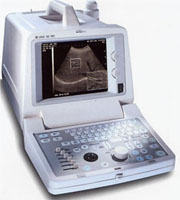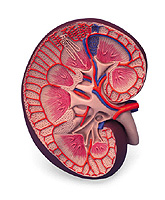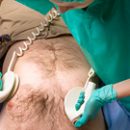The procedure for the diagnosis of amyloidosis is very complicated, since there are no specific laboratory changes. There are special samples for the definition of amyloid in analyzes. The treatment of amyloid depends on the form of the disease.
Content
Methods of diagnosis of amyloidosis
The diagnosis of primary amyloidosis is complex and requires the use of all possible methods. Secondary amyloidosis of the organs is relatively lighter, since the disease is known to lead to its development.
Specific laboratory changes in amyloidosis. However, for patients, the presence of a significantly increased EEM (50-70 mm / h) and anemia (in some cases, thrombocytosis is noted - a decrease in platelet levels, an increase in the level of fibrinogen in the blood). Special samples are used for amyloid (with the congor, methylene blue, which normally change urine color, while in patients they are fixed by amyloid and are removed with urine in minimum quantities), and the electrophoretic studies of urine proteins.
With the amyloidosis of the heart on the ECG, low voltage of the teeth is recorded. When conducting an ultrasound examination of the heart (ECCH), there is a combination of increased echogenicity (permeability) of myocardium and thickening the walls of the atria, which in 60-90% of cases indicates amyloidosis.
In the proteinuric stage of amyloidosis of the kidneys, a minor amount of protein is revealed in the urine and the periodic appearance of red blood cells, which is sometimes detected only in the study of urine precipitate according to the Kakov-Addis method. In addition, single cylinders (hyaline, grainy, wax) and leukocytes are determined in the urine. In some cases, renal blood flow and filtering are slightly reduced.
In the nephlastic stage, the amount of albumin (low molecular weight of blood plasma protein) is growing, globulins are dominated among urine proteins, especially their large particles. There is a high content of gammaglycoproteis and alpha lipoproteins in the urine. A small amount of red blood cells, cylinders and often leukocytes detect in the urine precipitation.
There is a decrease in blood protein levels with a disturbance of their relation (albuminoglobulin coefficient decreases to 1.0 and lower), alpha-2 and gamma fractions are dominated among globulins. There may be an elevated blood cholesterol. Sometimes a moderate increase in creatinine, urea and residual nitrogen - uric acid exchange products are found in the blood. There may be small changes in the eye dove. Great importance in diagnosis belongs to biopsy kidneys. In addition, the results of radiological and radio-indigenous research methods help clarify the diagnosis.
With the amyloidosis of the liver, the laboratory study identifies characteristic protein shifts, especially alpha-2-globulinemia, immune disorders, often increased serum phosphatase activity, other functional samples changed little. The most diagnostic significance of the local liver biopsy.
Treatment of amyloidosis
 Treatment of primary amyloidosis conjugate with great difficulties. On success in the treatment of secondary amyloidosis, it is possible to calculate only if there are no coarse changes in the organs, and also, if you eliminate the cause caused. Treatment includes a diet, gentle regime, if possible - a radical elimination of the underlying disease (osteomyelitis, tumor), the purpose of pathogenetic and symptomatic means.
Treatment of primary amyloidosis conjugate with great difficulties. On success in the treatment of secondary amyloidosis, it is possible to calculate only if there are no coarse changes in the organs, and also, if you eliminate the cause caused. Treatment includes a diet, gentle regime, if possible - a radical elimination of the underlying disease (osteomyelitis, tumor), the purpose of pathogenetic and symptomatic means.
Pathogenetic therapy belongs to the assignment of Hingamine 0.25 g per day, 5% toilet 5-10 ml intramuscular courses of 20-30 injections, colchicine (effective in hereditary forms) 2 mg per day, immunosuppressants during amyloidosis due to myeloma disease, and primary forms of the disease.
Symptomatic means are used according to indications (hypotensive, diuretic, desensitizing agents, iron preparations, vitamins of group B, heart glycosides, transfusion of solid blood and its components, hepatoprotectors, and T. D.). When developing chronic renal failure, the issue of hemodialysis and kidney transplantation should be resolved.








